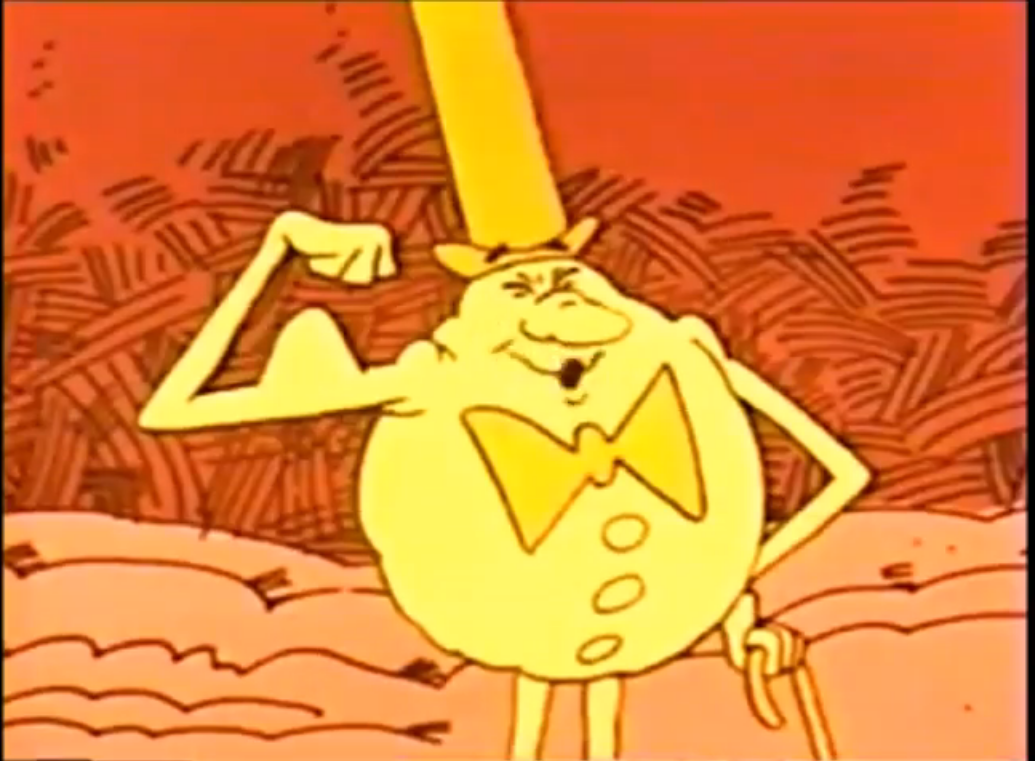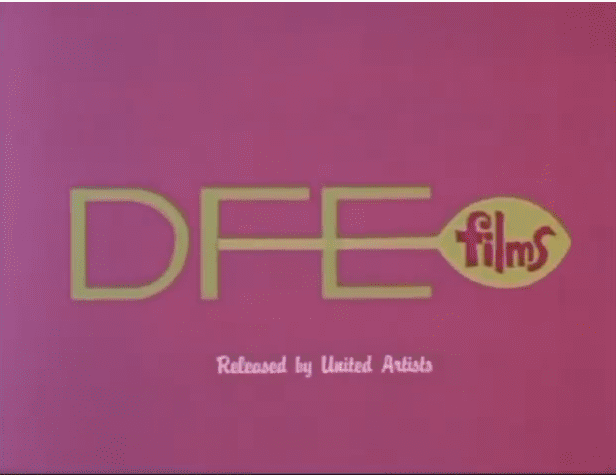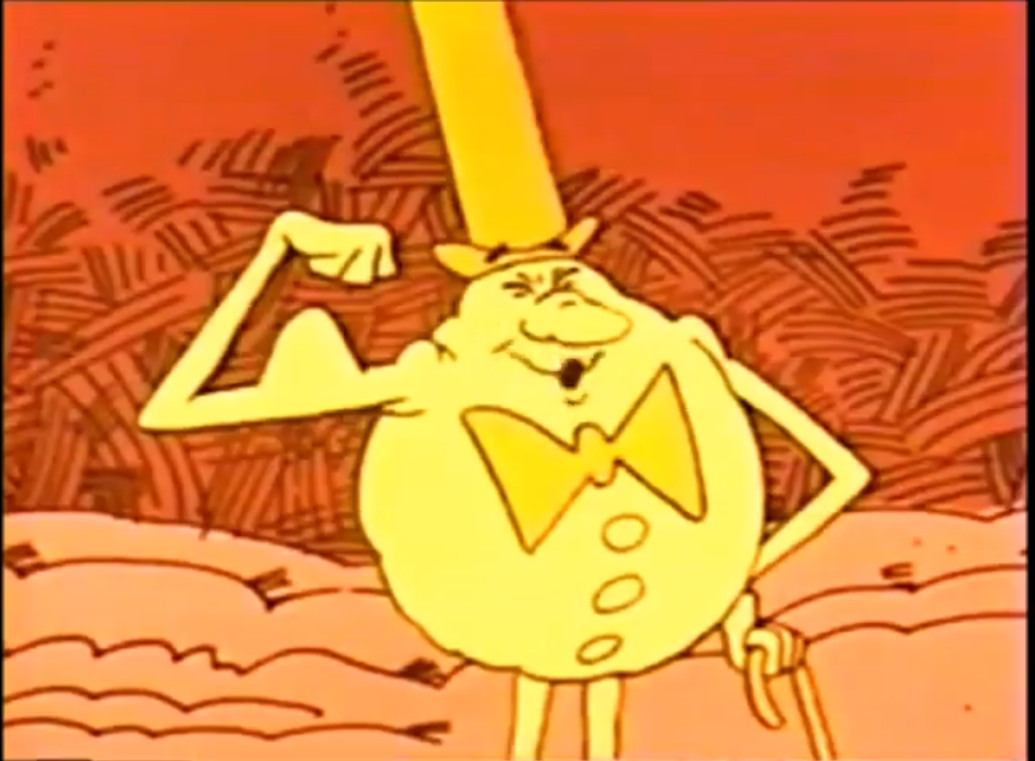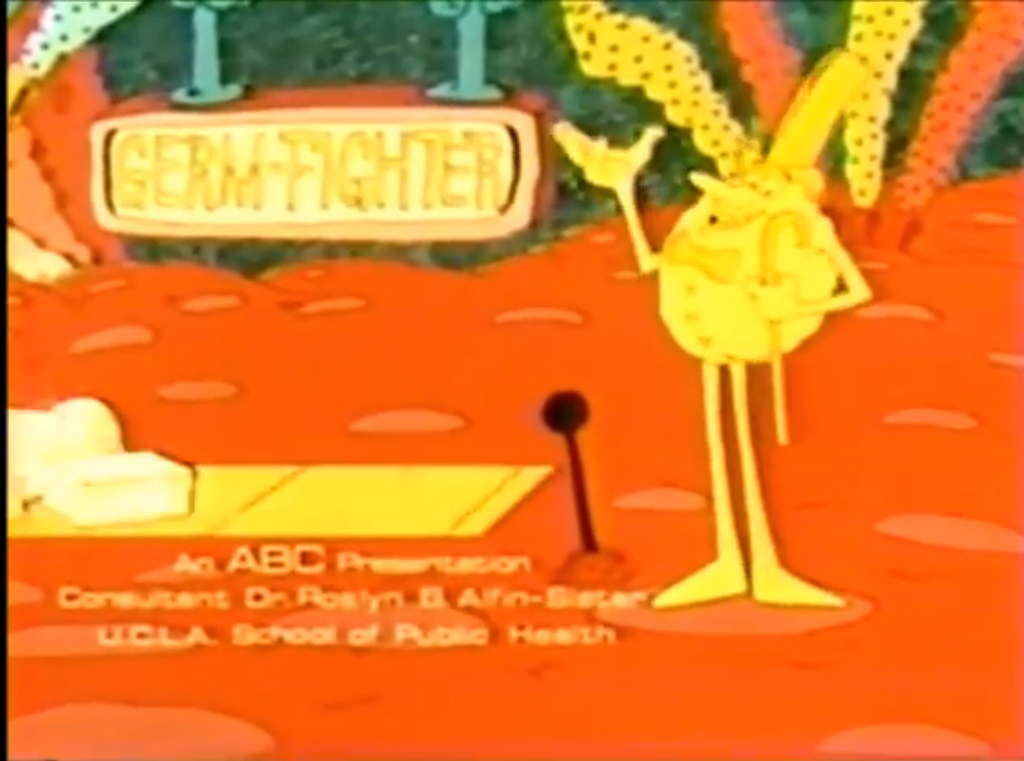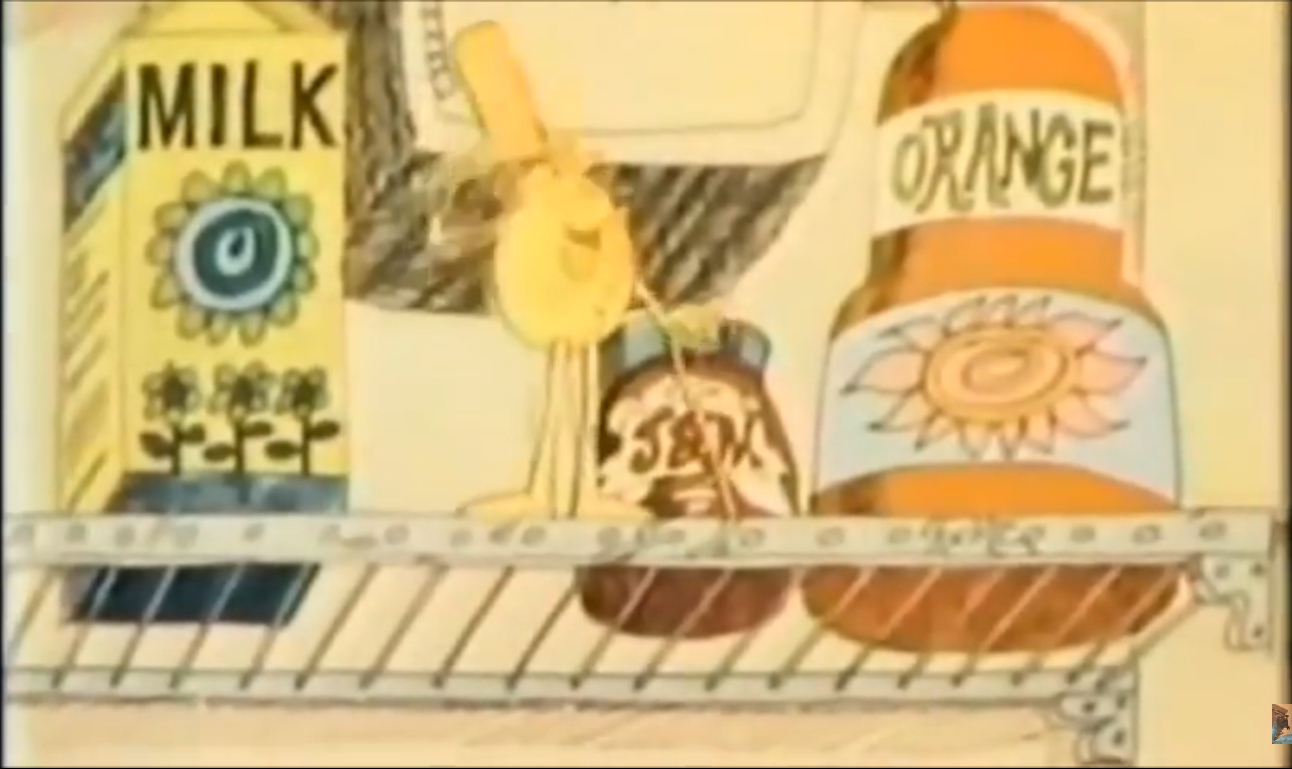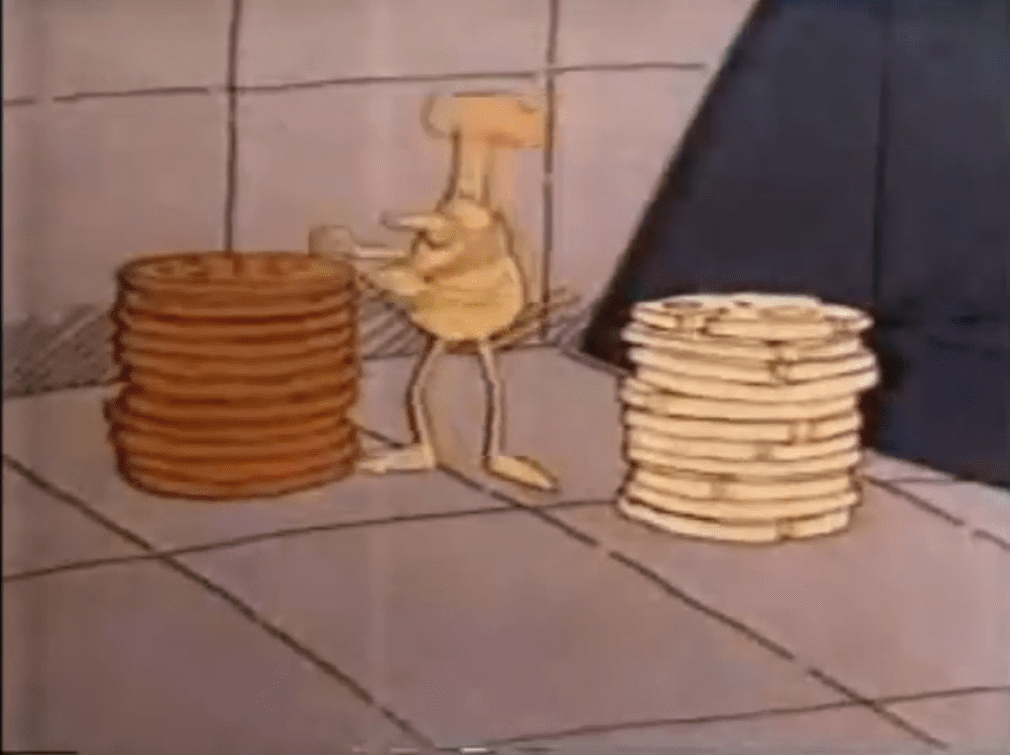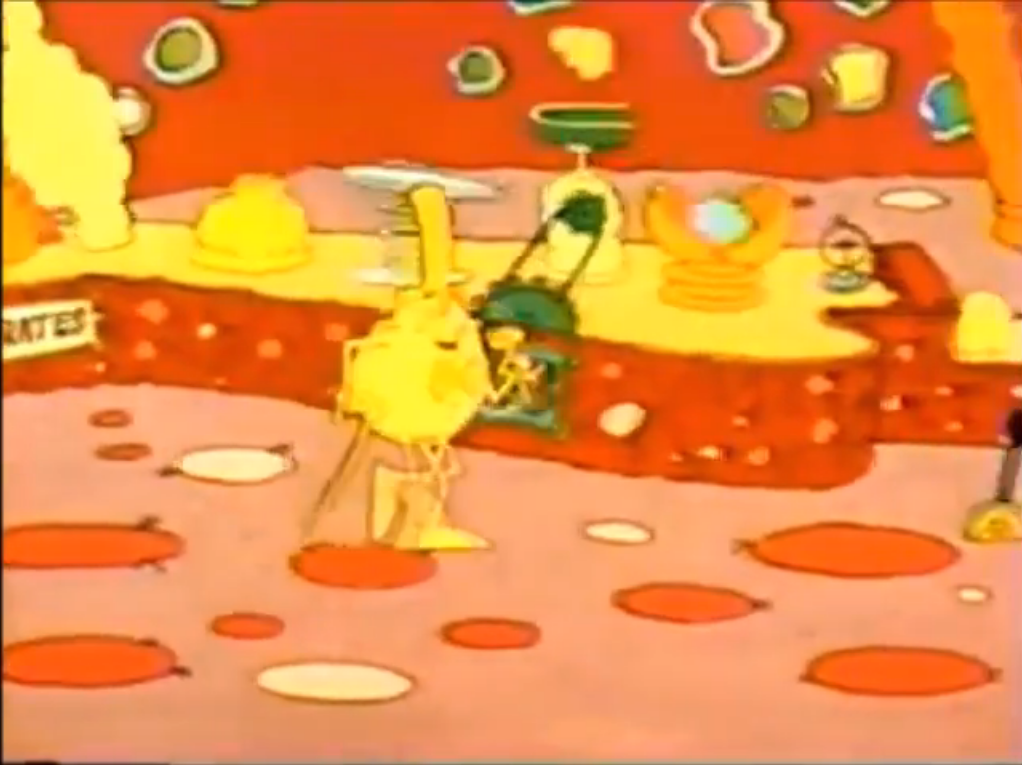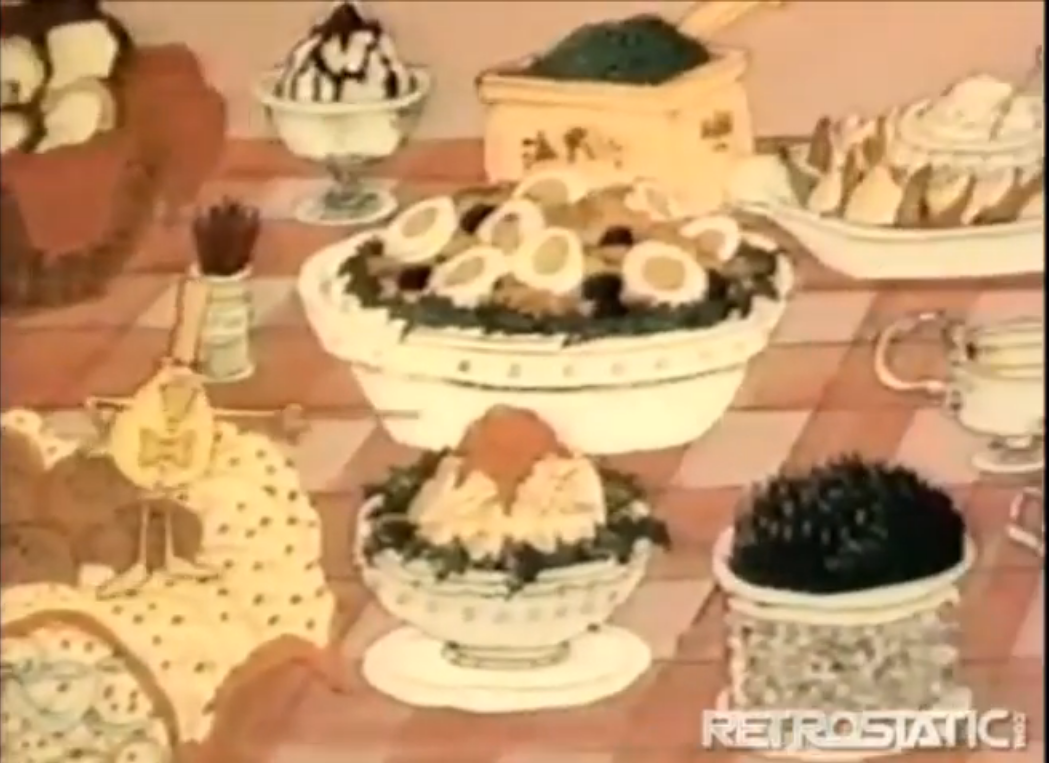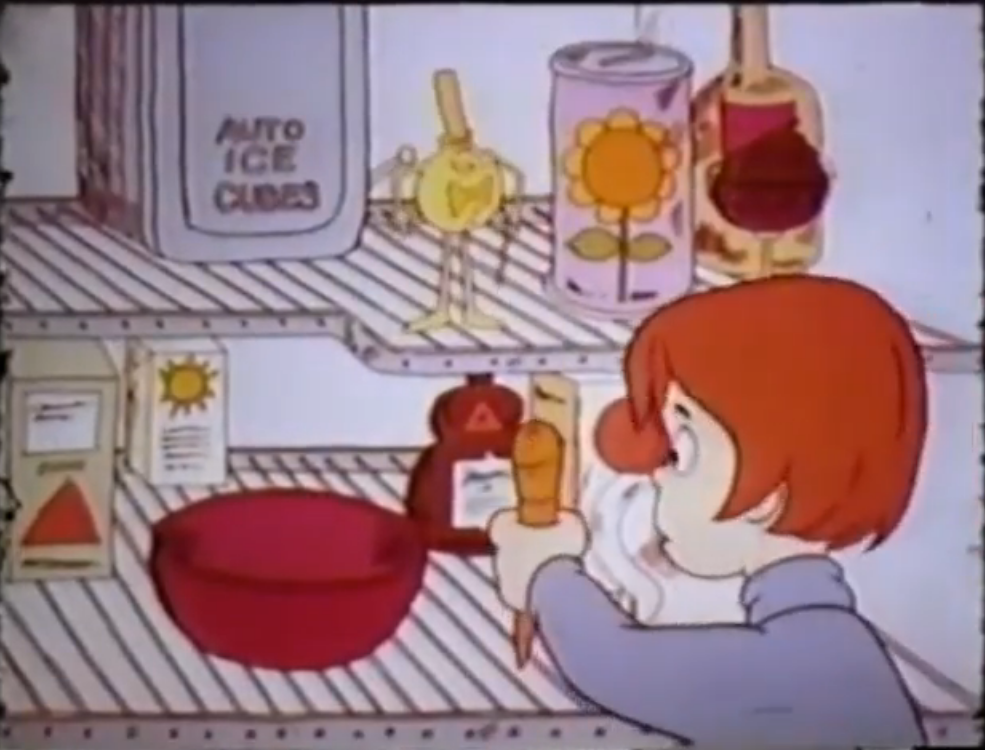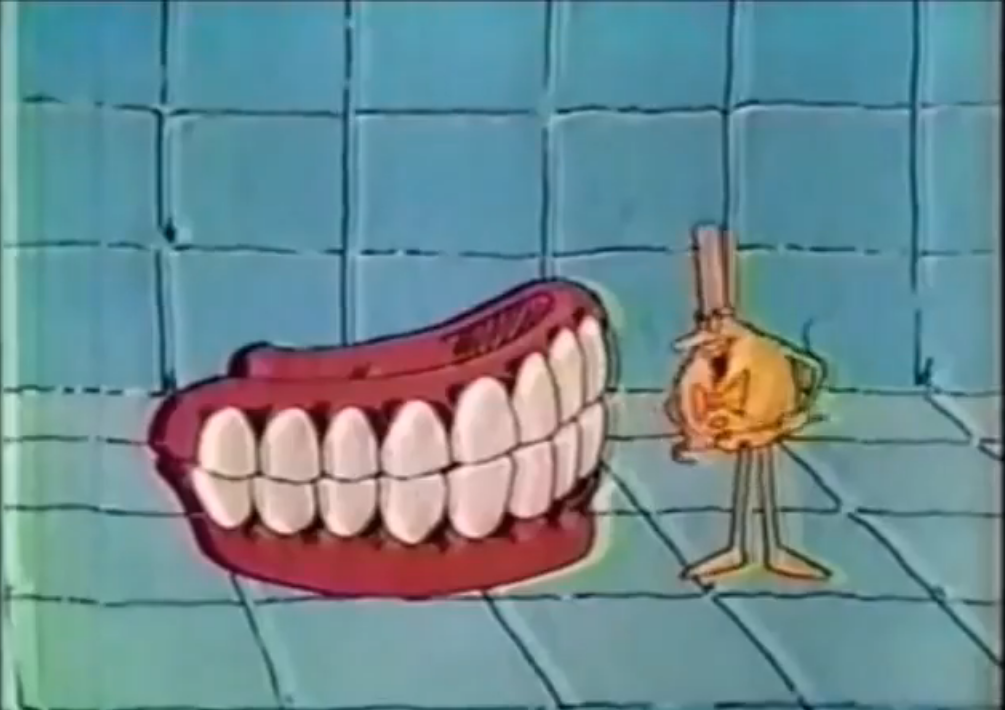I’m talking to you from inside a fantastic factory…your digestive system!
I’ve never thought of my digestive system as such, but go on Saturday morning interstitial program!
As I’ve said in previous articles on the subject of interstitials, there was a set amount of time during the commercial breaks between Saturday morning cartoons (or for adults, on weekdays between soap operas) devoted to educating the public, young or otherwise, on something they may not have known, or something to improve upon. Though many interstitials were products of the Television Code (the pre-Children’s Television Act way of regulating programming and advertising geared toward children), some came directly after the Code’s practices were eliminated in 1983.
NBC’s One to Grow On began in the fall of 1983, and only ended when it was succeeded by The More You Know (an educational/informative segment that continues to be relevant today). School House Rock, probably the most well-known of this type, lasted far longer than the the other segments, and even saw a brief revival in the 1990s. Other segments like Snipets saw their end as the media company that produced the segments saw its own end (even though it was picked up by other media companies and aired into the mid-1980s), and Hooray for Reading was cancelled because of complaints from authors. On the adult side of things, ABC’s FYI gave good information to the soap opera-watching crowd for a few years in the early 1980s.
This week, I’m looking at two more interstitial programs, both aimed at children. These both aired on ABC, and saw life both during and after the Code, and even beyond other interstitials that lasted past 1983. Both are products of DePatie-Freleng Enterprises, an animation group founded in 1963 on the partnership of Warner Brothers employees, executive David DePatie and producer/composer/director Friz Freleng.
The History of DePatie-Freleng Entertainment/DFE Films
Before I get too far ahead and you know, actually talk about these interstitials, a little history on DePatie-Freleng:
Both founded the company upon Warner closing its animation studio in 1963. The duo were able to operate their company from a generous leasing of space and equipment formerly occupied by Warner’s animation studios by a Warner executive, for a few dollars each year. The company produced the Pink Panther shorts, as well as Ant and the Aardvark, new Looney Toons shorts, The Inspector, Dr. Seuss specials that aired until 1982 (two of which were finished by DePatie-Freleng’s successor), and even two cartoons based on Marvel characters, The New Fantastic Four (1978) and Spider-Woman (1978-1980). Their credits are a wide variety of programs and films, and even the animated credits during the Pink Panther movies in the 1960s. I’ve never had any desire to watch those movies (and especially not the Steve Martin version), but I’ve always liked the shorts, those opening credits, and of course, that sweet Henry Mancini score.
DePatie-Freleng’s output decreased in quality by the end of the 1970s, and citing the rising cost of producing theatrical cartoons, as well as the pressure of producing cartoons for television series, the duo sold DFE to a different animation studio in 1981, a certain company known now for its cinematic universe, but in the 1980s, they would become known for their output of cartoons based on licensed characters. That’s right, they sold their company to Marvel Productions, which would go through its own changes over the years to become what it is today. David DePatie became the head of this newly-formed arm of Marvel Comics, and Friz Freleng would return to Warner’s re-opened (as of 1980) animation group to produce a series of Looney Toons films, featuring new animation connected by previous shorts.
David DePatie (who is still alive today, at 91 years old), stayed with Marvel Productions until 1984, and briefly went to Hanna-Barbera to produce Pink Panther and Sons. That show ran for one season from 1984 until 1985, and its end was also the beginning of DePatie’s retirement. Friz Freleng (whose real name was Isadore), stayed at Warner Bros. as an executive producer for the series of Looney Toons features, before stepping down in 1986. He passed away in 1995 at the age of 88, his legacy of animation quite respectable.
So between the incredible resume of shows, movies, and shorts in their wheelhouse and on their resumes, DePatie-Freleng was also responsible for several interstitials made for Saturday morning viewing. Two of these only resulted in seven episodes each, but both had lives long after their animation company rode off into the sunset. Both taught the importance of self-care and good habits.
For today, it is…
Time for Timer!
No, really. That’s the name of the short!
Time for Timer was a body-informative series of shorts produced in 1977, with seven segments focusing on good dietary habits and self care – healthy snacks, dental hygiene, how the digestive system works, and trying new foods. Each segment featured a character named Timer, voiced by veteran voice actor Lennie Weinrib (known as the original voice of the delightful punching bag named Scrappy-Doo, among notable roles, both voice over and live action). Timer represented the sense of time in the human body, and in charge of when a person felt they should eat or sleep, among other functions. He carried a pocket watch inside of him, which set off an alarm whenever something was about to happen.
Before being featured in his seven shorts, Timer was featured in the 1973 ABC Afterschool Special “The Incredible, Indelible, Magical, Physical Mystery Trip.” He was a fixture on ABC for his initial run and all repeat runs, save for a brief time in the late 1970s, when he moved over to NBC when Fred Silverman did. Though the shorts were originally all produced in 1975, they continued to air until 1992, concurrently and interchangeably with other ABC interstitials and Public Service Announcements.
In seven instances of providing good advice, Timer, recast as a Cowboy, hankered for a hunk of cheese (or “hanker fer a hunk ‘o cheese”), and made a snack of crackers and cheese, taught children how to properly brush their teeth, explains the digestive system, prepares carrot snacks for a boy, the importance of breakfast, making ice pops with fruit juice, an ice cube tray, and a toothpick, and trying new foods by creating a smorgasbord of “smidgens” and other foods.
He even did this for funsies…
Don’t ever tell Timer to “make you a banana.” This is what happens.
Because the shorts aired over the course of so many years, they’ve all survived to make the move to YouTube, where they have been packaged up nicely in this little compilation video.
Ugh, you can just hear Scrappy-Doo in these earworm songs.
Speaking of which…
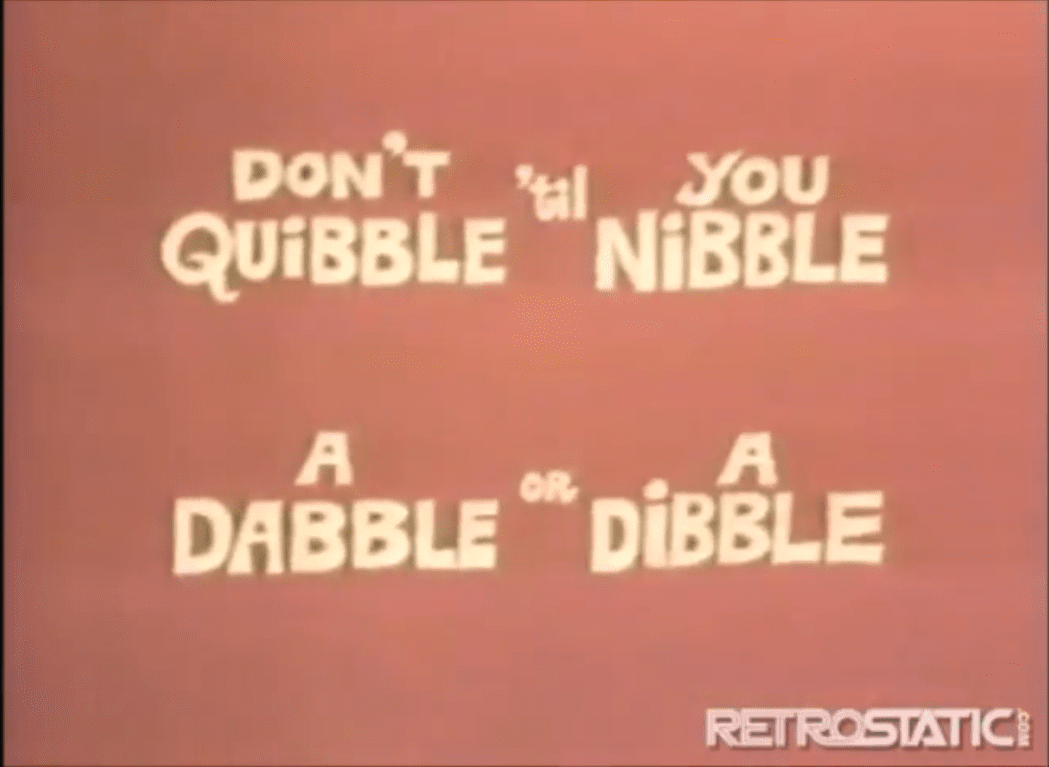
I can totally picture this on a sign in a kitchen to target picky eaters, right next to one that says “There’s two options for dinner – eat it or starve.”
This one is clearly more friendly.
I vaguely remember seeing Time for Timer during the 1980s. My Saturday morning cartoons usually alternated between CBS and ABC during the 1980s and 1990s, moreso to CBS once The Real Ghostbusters went off the air. But I do remember “Hanker Fer a Hunk O’Cheese,” if only for the song. It resides somewhere in the recesses of my brain reserved for stuff like this…and stuff like another interstitial that dealt with similar topics in a different, but also education, fashion.
That’s another story for another time…like Flashback Friday!
Until then, have a great Throwback Thursday, and um…don’t ask Timer to make you anything. He takes it seriously.
